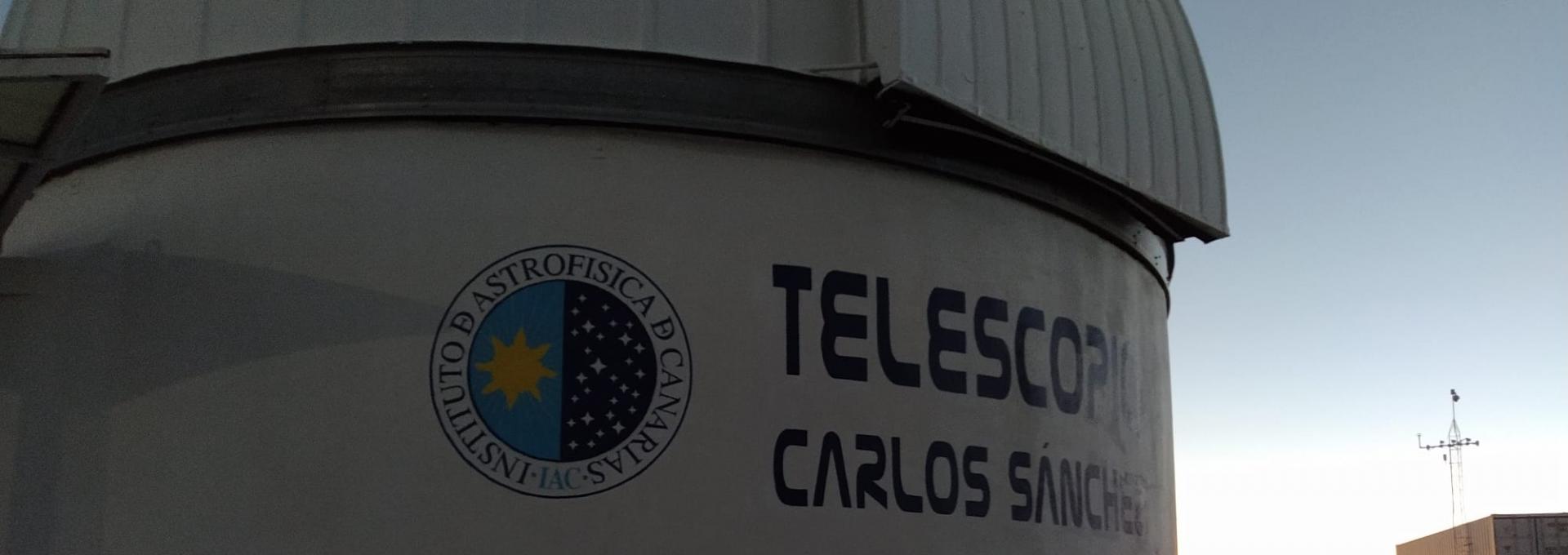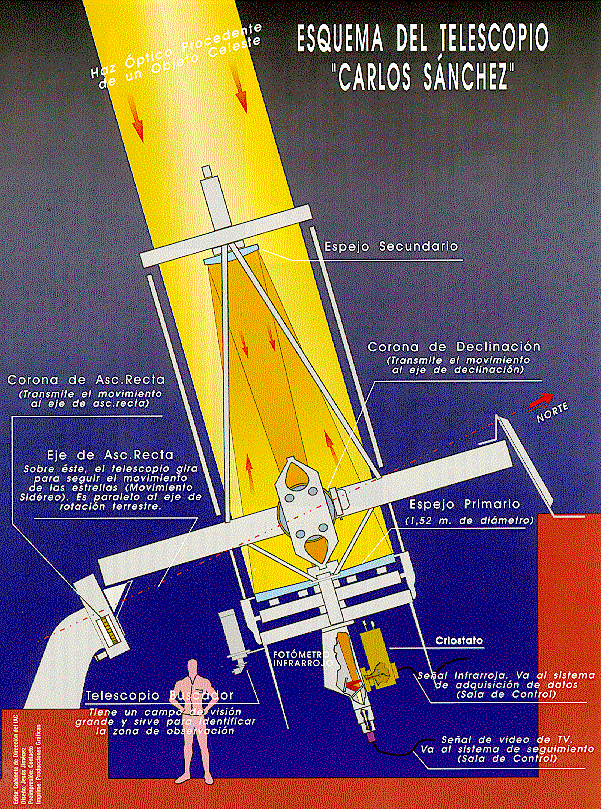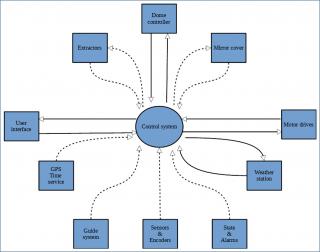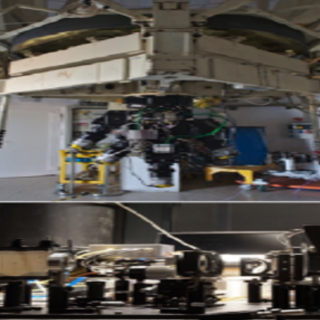Telescopio Carlos Sanchez



FocusCassegrain (f/13.8)
Instrumentation
| Physical limits | values |
|---|---|
| North | Dec +64.55 deg |
| South | Dec -36 deg |
| East | AH -4.57 hours |
| West | AH +5.01 hours |
| Optical system | values |
|---|---|
| Primary-secondary distance | 135″ (3429 mm) in the secondary central position |
| Primary-equipment holder ring dist. | 22.25″ (565.15 mm) |
| Focus-equipment holder ring dist. | 49.75″ (1263.6 mm) |
| Floor-equipment holder ring dist. | 73.00″ (1854.2 mm) |
| Focal plane-secondary ratio | 20 mm focal plane displacement |
| 1 mm displac. sec. | 30″ image widening |
| Primary mirror | Secondary mirror | |||
|---|---|---|---|---|
| Reflecting surface geometry | Concave ellipsoid | Reflecting surface geometry | Convex sphere | |
| Diameter | 60″ (1524 mm) | Diameter | 371 mm (checked on 26/03/87) | |
| Hole diameter | 8″ (203.2 mm) | Curvature radio | 2925 mm | |
| Curvature radio | 9134.39 mm | Focus path | 140 mm (±70 mm) | |
| Conic constant | -0.712 | Weight | 16 kg | |
| Weight | 512.5 kg | Transmission weight (without mirror) | 10 kg |
The name of the telescope was adopted in honour of Prof. Carlos Sánchez Magro, Astrophysics Professor at the University of La Laguna, Prof. Carlos Sánchez was a very distinguished member of IAC since its origins. He was born in Valladolid in 1944 and died in Tenerife in 1985, unfortunately only 6 days after the solemn inauguration of the IAC´s facilities and observatories. He was a tireless promoter of Infrared Astronomy and Astronomy teaching.
The TCS is suitable to observe ""cold"" objects, like stars in the first or last stages of their evolution. Some of the first infrared images of the impact of the P/ Shoemaker-Levy9 comet on Jupiter and some images of sub-stellar objects like G196-3B, were obtained with it. Sometimes, the TCS operates together with other telescopes, mainly in the OT (OGS and IAC80), for complementary observations in different wavelengths or for investigations of the atmospheric structure.
The TCS has been used for a wide range of infrared observational programmes, from large-scale Galactic Centre mapping to stellar oscillations. Altogether, the TCS has generated almost 250 refereed papers in international journals.
Some examples of results are:
1) The creation of a catalogue of galaxies with stellar formation in the H band of emission -first of this type- that includes 70 of such objects. This project has required an immense amount of observing time.
2) Photometry of asteroid 2002 NY40, that rapidly crossed the sky at a distance from the Earth of only 750,000 km.
A photometric study of the Orionis Sigma clusters in R, I and J bands with the Carlos Sánchez, OGS and IAC80 telescopes, identifying 50 low mass stars and brown dwarf candidates.

Los telescopios Carlos Sánchez (TCS) e IAC80, conocidos como TTNN y situados en el Observatorio del Teide, son telescopios operados manualmente por parte de los astrónomos (de forma presencial o remota) a través de unas aplicaciones informáticas específicas desarrolladas en su mayor parte en los años 90. Estas aplicaciones permiten controlar todos

Los Observatorios de Canarias (OOCC) representan la mayor colección de telescopios solares y nocturnos profesionales del mundo. El objetivo del proyecto de operación de las instalaciones telescópicas del IAC es la correcta gestión de aquellas instalaciones pertenecientes al IAC en los OOCC, así como de la instrumentación propia del centro y de la
No se ha encontrado ningún resultado.